Isfahan, divine city of colors and remarkable architectural masterpieces, has been loved dearly by its national and international visitors, as well as its inhabitants. It’s called “Nesf-e Jahan” [means half of the world] for there are as much to see in Isfahan as you can find in half of the world.
It goes without saying that you need to dedicate a good amount of time to explore this jewel in the center of Ancient Persia. Born and raised in Isfahan, I think the below itinerary will allow travelers to experience and discover the magic of Isfahan.
Day 1:
Start your journey with the greatest gem in the city: Naghshe Jahan square, UNESCO world heritage site from the Safavid era [1501-1722]. You won’t get enough of the beauty of the complex, so you surely will go back there again in next days. The square is centrally located and it’s easy to reach there by bus, taxi or metro.
As you enter Naghshe Jahan, your eyes will spot Shah mosque with the turquoise dome (also known as Imam Mosque), Sheikh Lotfollah mosque with the khaki dome and Ali Qapu palace right in front of it.
Keep in mind that you cannot enter the Shah mosque during the prayer time that is around mid-day.
After having a delicious lunch in one of the restaurants nearby, it’s time to take a look at Hakim mosque, one of the oldest ones from the Safavid era. After a 20 minutes walk, you will get to Ali Qoli Aqa hammam, another Safavid bequest with more than 300 years of antiquity.
Note: Azam restaurants serve the greatest Beryan in Isfahan. It’s the only special food of Isfahan that the place of its cooking and selling is almost separate from other dishes. Beryan is prepared on flatbread, with a layer of sautéd minced lamb meat.
You can book The best Luxury hotels in Isfahan easily through 1stQuest.
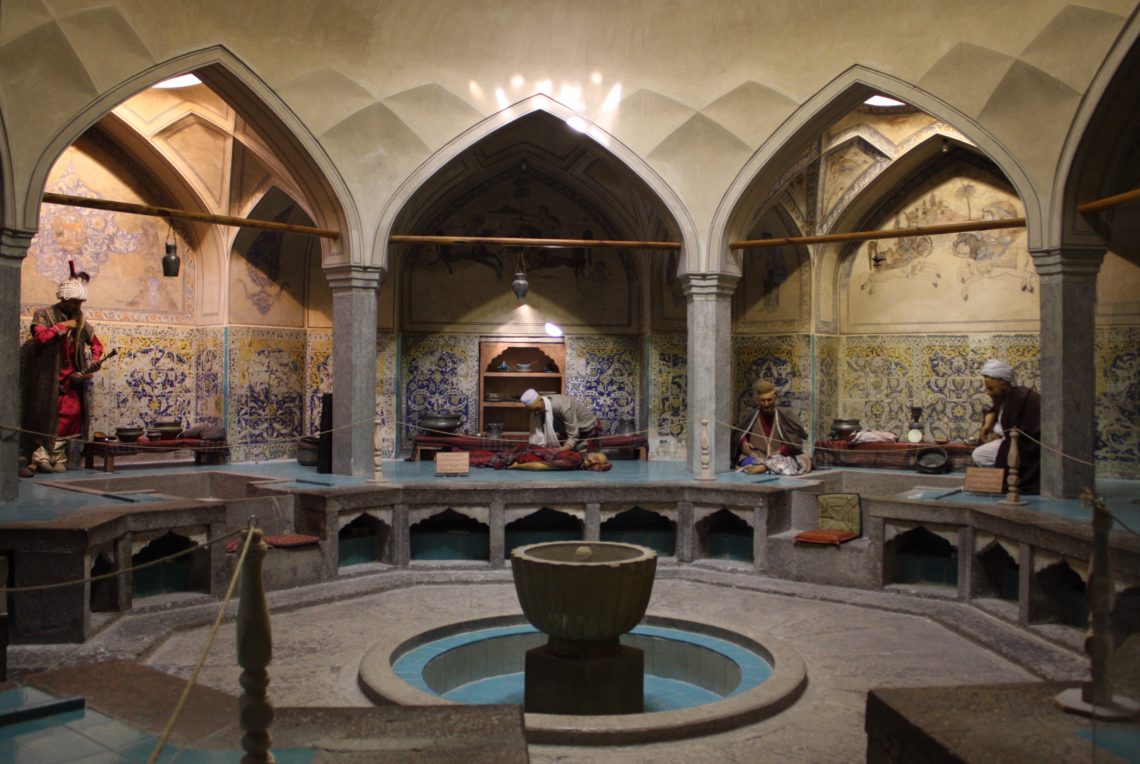
Ali Qoli Aqa Bathhouse, Isfahan, Iran
Day 2:
Let’s move towards the oldest region in the city: Kohneh (sabzeh) square. The word “kohneh” means old in Farsi, so it explains the ancientness of the area perfectly.
Jaameh mosque [UNESCO world heritage site] and Seyed mosque are in your walking distance. In the labyrinth of Isfahan alleys, you will find an amazing fun place to spend your afternoon in Qazi bathhouse. It dates back to 300 years ago and offers you an unforgettable memory with a unique experience in Hammam.
Also check out: Traditional hotels in Isfahan
Having taken a tranquil rest, head off to Choobi bridge and then Khaju bridge; the finest bridge of the city on Zayandeh river. Due to regional climate issues, the river is dry most of the time. However, the beautiful bridges that connect the northern and southern parts of the city are always worth a visit.
Isfahanis gather around after the sunset under the bridge to have a little musical get-together; some sing, some play instruments, some dance, and some watch to enjoy the festive vibes there.
Also check out: 5 must-see landmarks in Isfahan
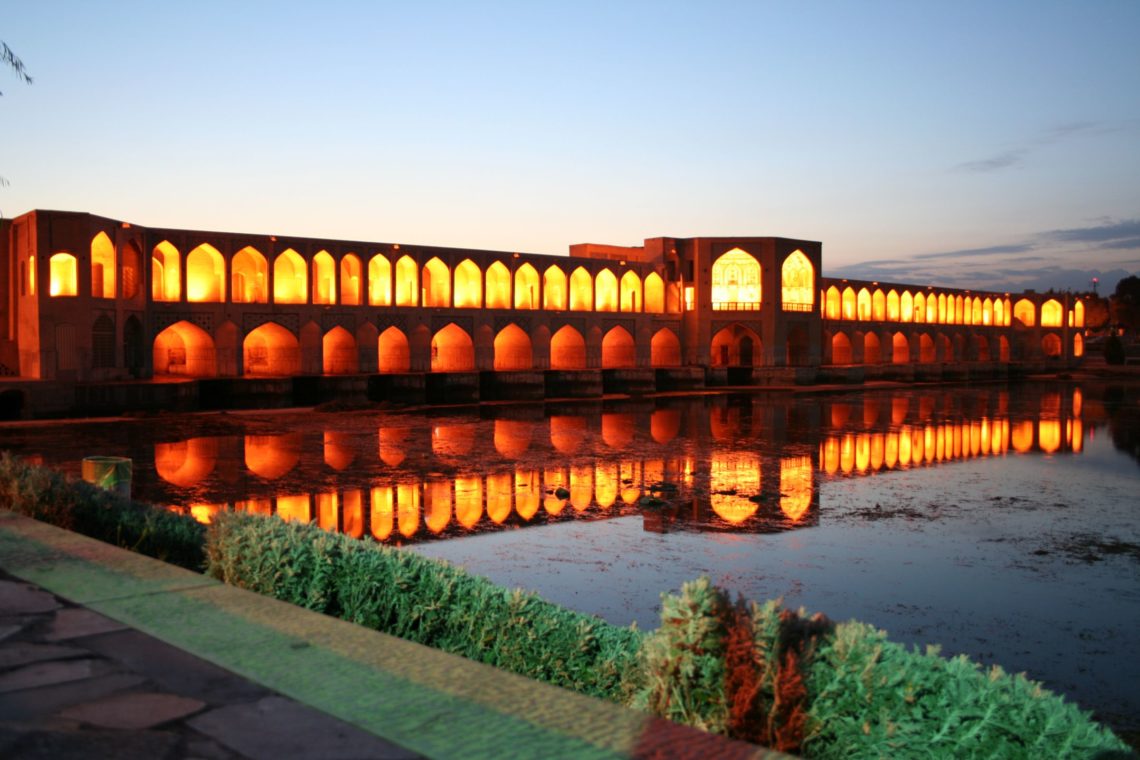
Khaju Bridge Isfahan
Day 3:
You surely didn’t spend enough time in Naghshe Jahan square and it’s time you went back there to discover more.
Before you enter the square, you may visit Chehel Sotoun, that is a pavilion used to use for entertainment and reception. This garden is registered as a UNESCO world heritage site.
All around the square, the oldest bazaars in Isfahan have surrounded Naghshe Jahan. They are full of captivating handcrafts shops, carpet stores, painting galleries, and Gaz shops. Gaz is a sweet, known to be the most popular souvenir from Isfahan and it’s made of sugar or corn syrup, pistachio, rosewater and egg whites.
Also check out: Best hotels in Isfahan
On the eastern part, look for the oldest cafe in Isfahan named Chah-e Haj Mirza. It’s like no other cafes you’ve ever been to and prepare yourself to see weird things there.
Head to Hasht Behesht palace, another architectural masterpiece near Naghshe Jahan.
It’s located in the middle of a park in Chahar-Bagh avenue.
By the time you are about to finish your visit, you can consider having a supreme lunch in Shahrzad restaurant.
After a rest, head for Sheykh bahai hammam, the most famous one in Isfahan which belongs to the Safavid era. The site is used only as a museum nowadays. It’s been said that the whole hammam used to get warmed up by a single candle and that makes this construction very special and notable to the visitors.
Walk southward on Chahar-bagh to reach si-o-se pol, the second significant bridge over Zayandeh River. It is a popular recreational gathering place, like Khaju bridge, and it’s a great example of Safavid architecture. Interestingly, the bridge was once decorated with erotic paintings, however, these have since been removed to accord with modern day Iran’s Islamic morals and laws.
Also check out: What to See and Do during your First Time in Isfahan
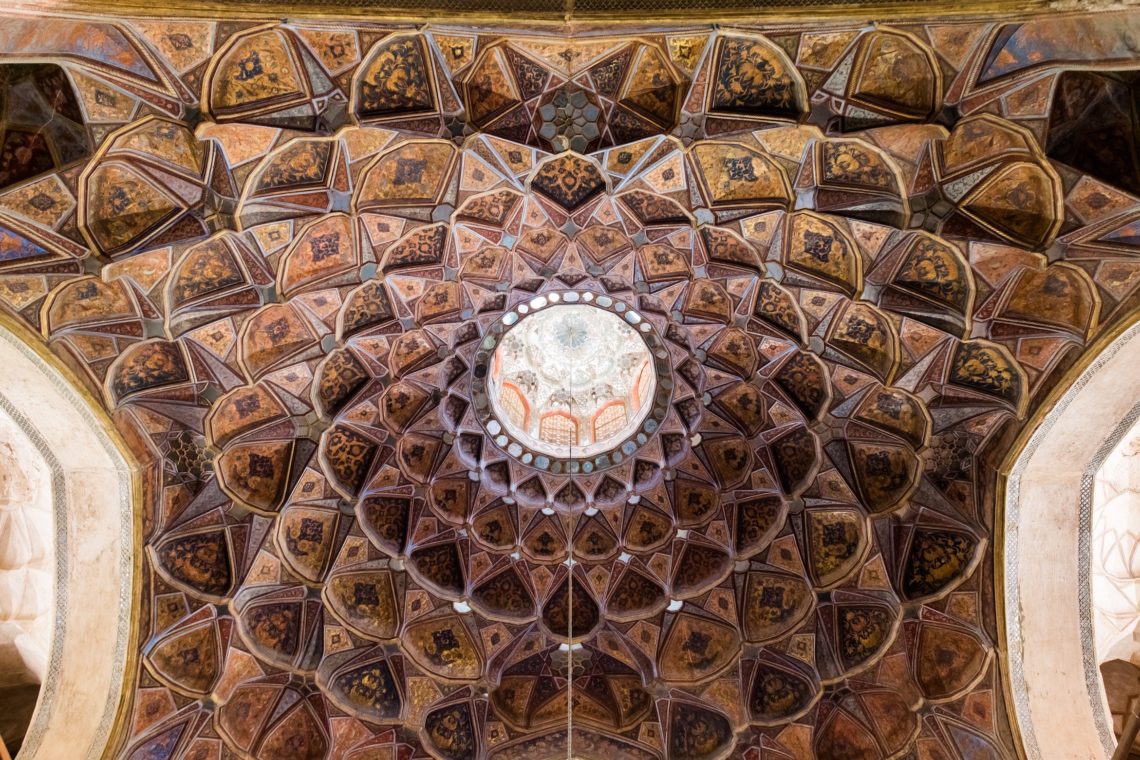
Hasht Behesht Isfahan, Iran
Day 4:
Let’s move to the other side of the river to see the other modern face of Isfahan.
It’s better to start your day with Isfahan music museum; the wonderland of musical instruments. If you’re lucky, you will be favored with a live show.
It won’t take more than 5 minutes to arrive in the glorious Vank Cathedral in the Armenian neighborhood. The interior is ornamented by colorful wall paintings and be sure you are going to spend a lot of time watching them perceive the details. As you exit the site, turn right twice get to Firouz sharbat house where a wide variety of traditional drinks are served. The decoration, also, has this lovely Persian vibes that you will love to have photos with. Jolfa square is right in front of you as you walk out and turn the right direction.
Also check out: Isfahan in 3 days
If you think you didn’t get enough of Isfahan Armenian neighborhood, perhaps you’d like to visit Saint Bethlehem church as well.
Wondering where to eat in Jolfa? I highly recommend you to try Hermes restaurant’s menu.
It’s time to try something new on your 4th evening in Isfahan. Soffeh mountain, in the southern part of the city gives you a great view of the whole city, as well as a good chance to breathe in fresh air. The hiking trail is not grueling. However, if you feel like saving your energy, it’s also possible to go up there by the cable car.
The other fun and different option would be taking a 3-hours cooking course with an Iranian cook. For more details, check Maryam Persian cooking class .
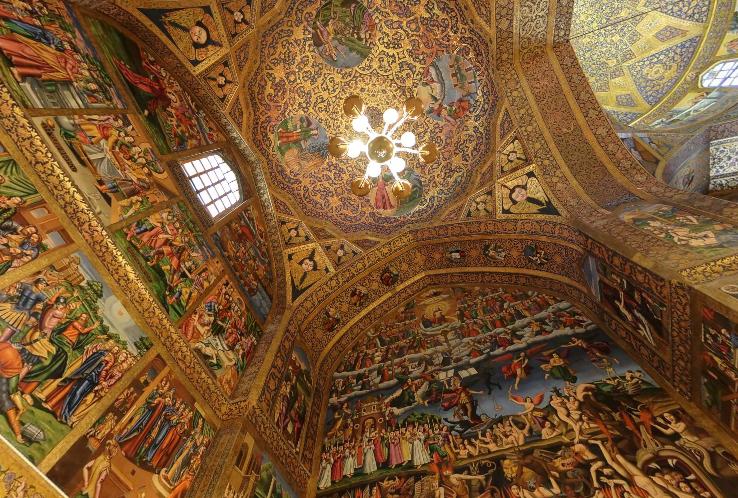
Vank Cathedral, Isfahan, Iran
Day 5:
You must be lucky to have enough time to check most of Isfahan sightseeing sites on your list. Monar Jonban and Atashgah (Fire Temple) are located very close to each other, both in the west of the city.
The former is famous for its magical minerates; if one minaret is shaken, the other will shake in unison. The latter is a Zoroastrian temple from Sassanid era built on top of a hill.
Also check out: Isfahan hostels
After having lunch in one of the garden restaurants in that area, drive to Isfahan Aquarium Tunnel in Nazhvan park. If you happen to have some extra time, there are several other sites near the aquarium: Seashells museum, Butterfly collection, reptiles house, and birds garden.
There are a few things you’d better not miss out while you are in Isfahan:
Doogh and goosh-e fil: Doogh is a refreshing Persian carbonated drink of yogurt and mint. Goosh-e fil is an Afghan and Iranian doughnut made by shaping dough into the shape of an ear (goosh) and deep-fried in oil.
Also check out: Cheap hotels in Isfahan
Khoresht mast: It’s a rich sweet dessert native to Isfahan only. You can find it in most restaurants.
Halim bademjan: It’s an appetizer made with eggplant, cooked lentils, and cooked shredded meat.
Poolaki: It is similar to toffee, in the shape of a very thin coin. It is made of sugar, water, white vinegar, and some natural flavors. It is usually served with tea.
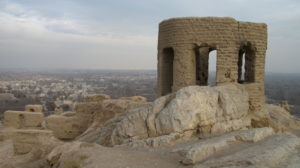
Fire Temple, Isfahan, Iran
